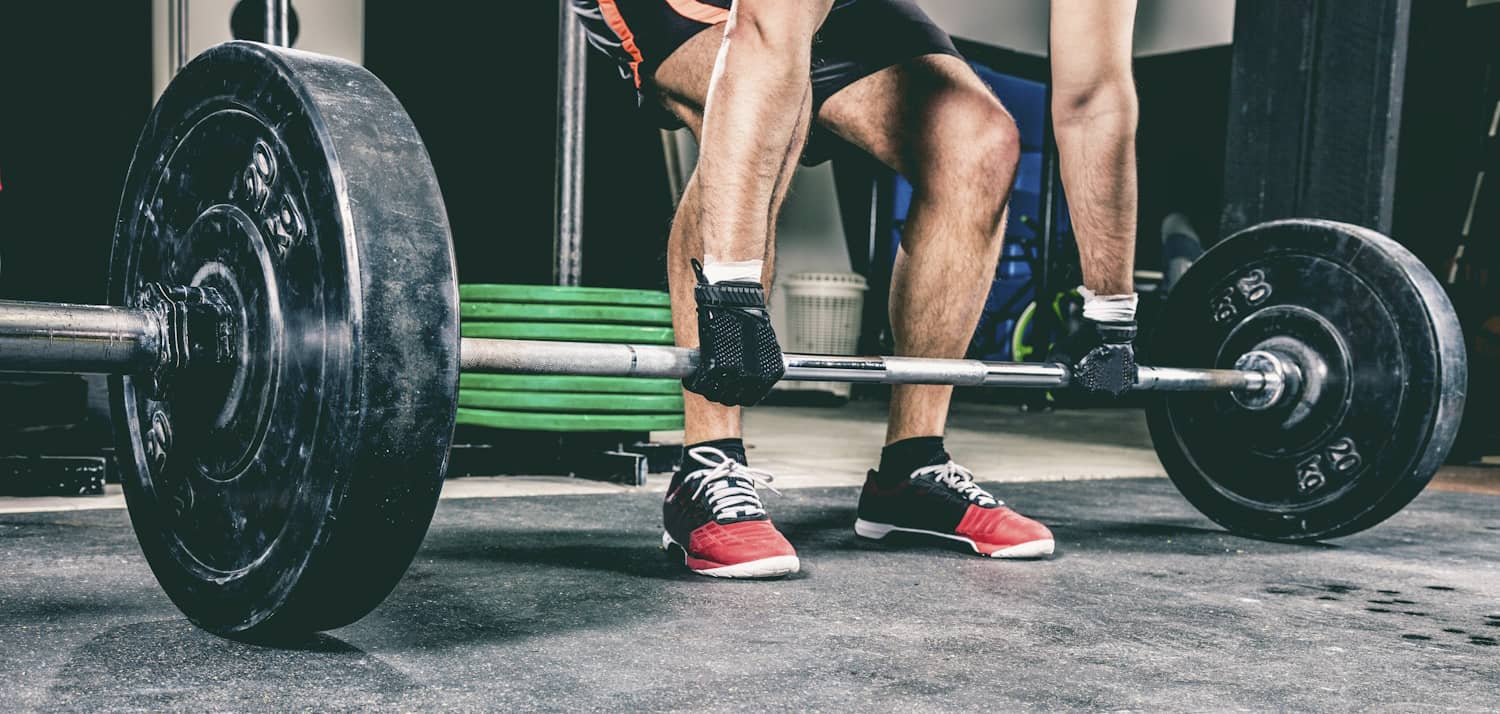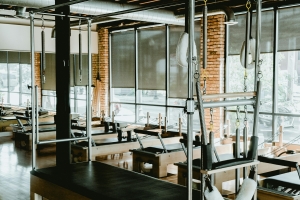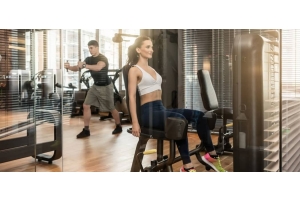Deadlifts Will Work Which Muscles?

This is, probably, the best single compound exercise that builds strength across the most muscle groups. But deadlifts work which muscles exactly? Popular with a wide range of gym users, the deadlift targets the muscles of your back, shoulders and legs. When you perform correctly it can improve posture as well as helping you to build muscle and strength.
This exercise requires you to lift a barbell from the ground up to a standing position, and then down again. The deadlift has three distinct phases : Setup, Pull and Lockout.
How To Deadlift Safely
With the three distinct phases - the Setup, Pull & Lockout - it's all about your form and making sure the weight is not too much.
Setup
Stand with feet hip-width apart. They should focus on engaging the core muscles and squeezing the shoulder blades together and down to engage the lats. If using a barbell, the bar should be on the floor and touching the shins. The person should then hinge at the hips, spine extended and chest lifted. Grip the barbell with an over-under grip, with one hand facing palm-up and the other palm-down. Squeeze the bar and sink back into the hips.
Pull
Imagine pushing your feet (especially your heels) into the floor. Push into the floor, straighten your legs and then lift the bar and your chest and push your hips forward as you pull your knees back.
Lockout
When fully upright, hold your shoulders back and straighten your spine. AFter 1 second, lower the barbell back down by pushing your hips back and using your thigh and core muscles to keep the movement of the bar down to the floor slowly.
Which Muscle Groups?
This is a compound movement. The deadlift muscles worked are extensive, so see the breakdown from top down.
Trapezius
The large, triangular, muscle from the base of your skull to the middle of your back. The traps primary function is to stabilise and allow movement of your shoulder blades
Lats
Based either side of your spine, the latissimus dorsi (or Lats for short) help to keep your spine stable during lifting
Core
Located in your abdomen and lower back they work together in order to support and stabilise the spine as you lift the weights
Hip
Responsible for flexing and extending your hip, these muscles and ligaments play a crucial role providing stability as well as movement
Glutes
Your glutes, or buttocks, are crucial for hip extension during the deadlift. You must activate and engage these muscles during lifting
Hamstrings
Finally, the muscles located on the back of the thigh, they ensure you extend your hip and flex your knee
The Benefits of Deadlifting?
As previously said, this is a compound exercise - which just means it works multiple muscles and joints as the same time (whereas using a seated or 45 degree leg press machine focuses on the lower body only).
The benefits are thus :
- Great for building overall strength and power
- Help improve posture
- Can help increase muscle mass
- Also good for improving athletic performance
Finally, Research has shown that deadlifting can also strengthen the bones and reduce the risk of osteoporosis.
Deadlift Variations
There are, believe it or not, some variations for this exercise. This can help with varying your workout as well as slightly changing the way the muscles worked are targeted.
Conventional Deadlift
The "standard" deadlift that targets the lower back, glutes, hamstrings, and forearms.
Sumo Deadlift
A wider stance - like a Sumo wrestler. Feet are placed outside of the hand grip on the barbell. This gives more emphasis to the quadriceps and inner thighs. Good for people with individuals with longer arms or legs, or limited hip mobility.
Romanian Deadlift
The Romanian deadlift means you keep your legs straight, have a slight bend in your knees and hinge at the hips to lower the barbell towards the floor. This variation really targets the hamstrings and glutes.
Trap Bar Deadlift
A common variation is the Trap Bar or Hex bar deadlift. Giving a more upright torso position it actually reduces stress on your lower back. (see our Jordan Trap Bar)
Deficit Deadlift
One for the pro's. A deficit deadlift means standing on a raised platform which makes the bar lower than a standard barbell. This increases the range of motion and places an even greater emphasis on the hamstrings and lower back.
The Perfect Deadlift Equipment List
Make sure you have the right gym equipment to hand for your deadlifts.
Barbell
Whether it's a 5ft, 6ft or 7ft Olympic or a Training bar, a good grip and enough room to lift is essential. If you are lifting 100kg+ ensure you have smooth rotating sleeves (bearings or bushings) and consider lifting straps or liquid chalk for grip.
Plates
Again Bumpers or Olympic plates it doesn't really matter. They add the resistance to your lift, so you can work up from fraftional plates to 25kg ones. We like the vulcanised bumper plates - especially IWF coloured ones.
Weight Lifting Platform
For commercial facilities, or where users are lifting 150kg plus, proper 40mm or 60mm deep weight lifting platforms are the way to go. Protects your floors, your plates and the bar sleeves from impact damage. Smaller home gyms and lesser weights, see below.
See our weight lifting platform options.
Drop Pads
For homes and smaller spaces, drop pads offer a great way to protect the floor and weights and absorb the dropped bar - it also makes it quieter too.
Lifting Belt
Provides support for your back. A lifting belt can be velcro or buckle but it needs to be stiff enough to support and stabilise the spine under heavy loads.
Lifting Straps
Help with your grip. You must ensure you use correctly (wrap properly) with heavier weights.
Equipment Tip
If you want the gear and don't have a huge budget, it is often cheaper to look for a bar and plate set like this 170kg Physical Rubber Competition Bumper Plate Set as it comes with everything you need to get started.








